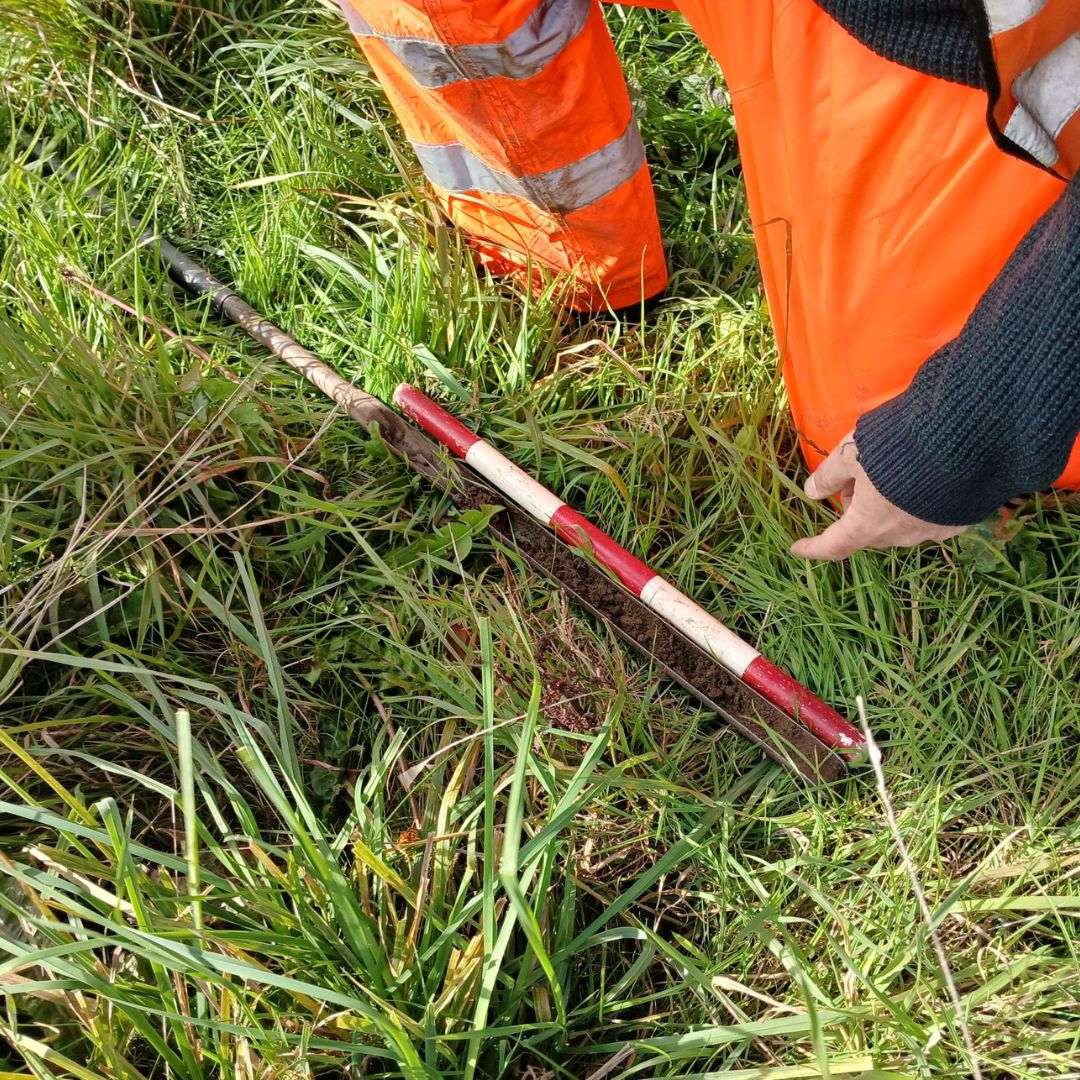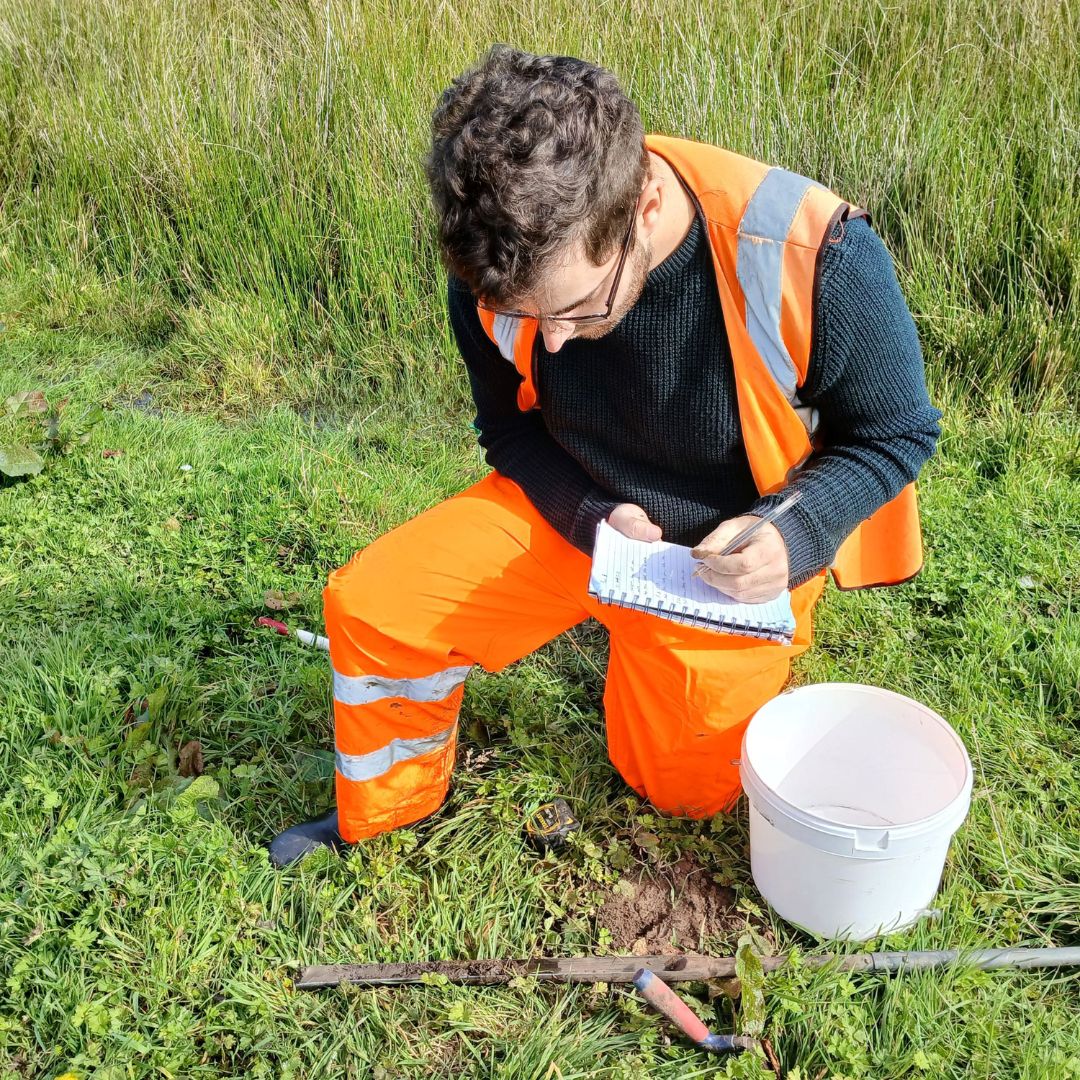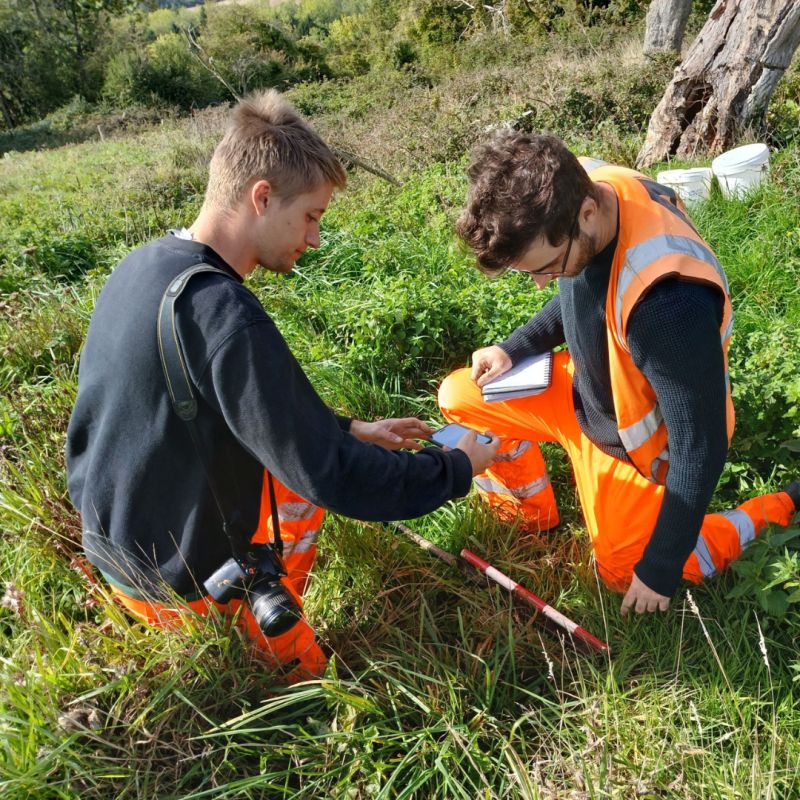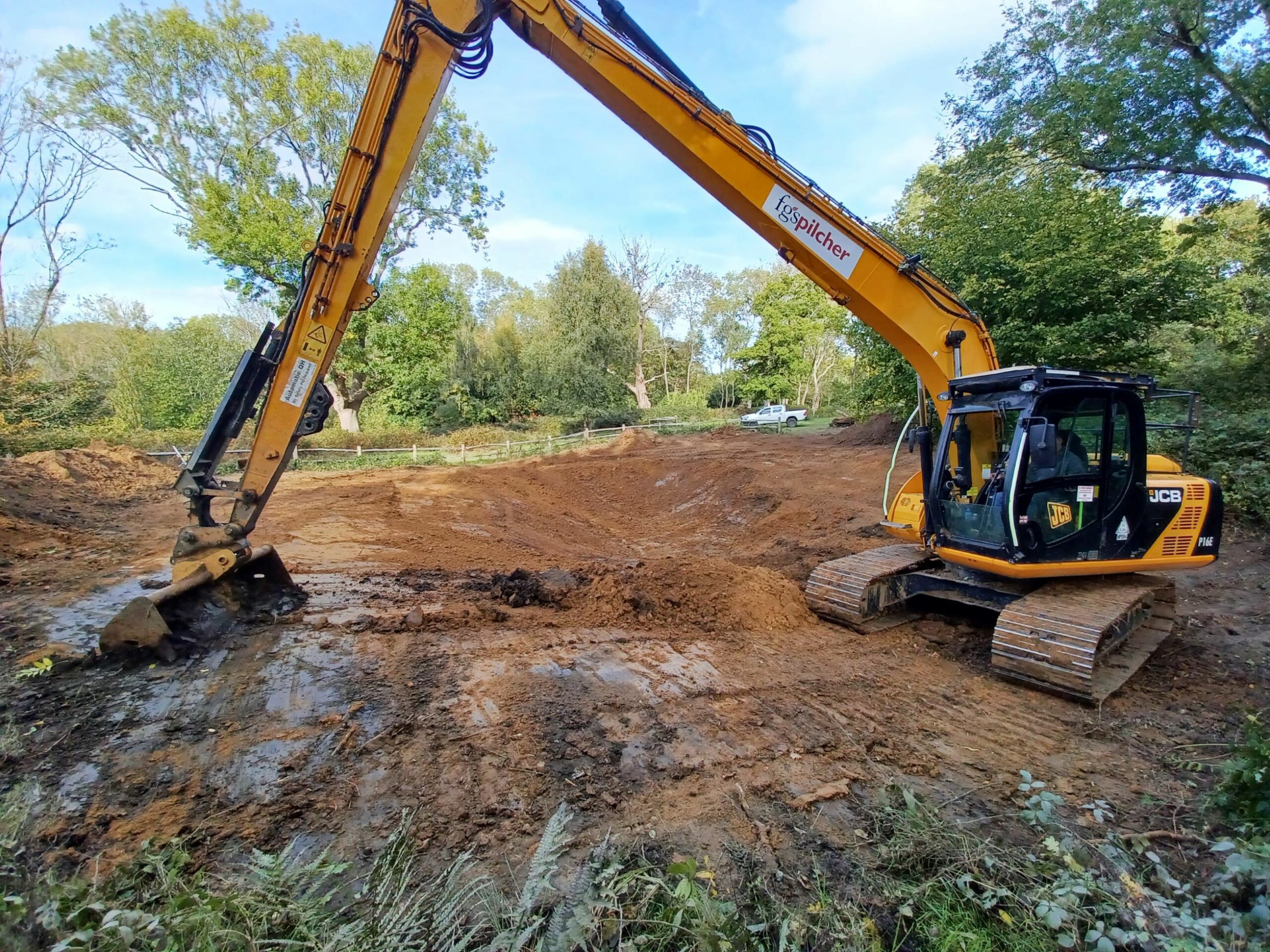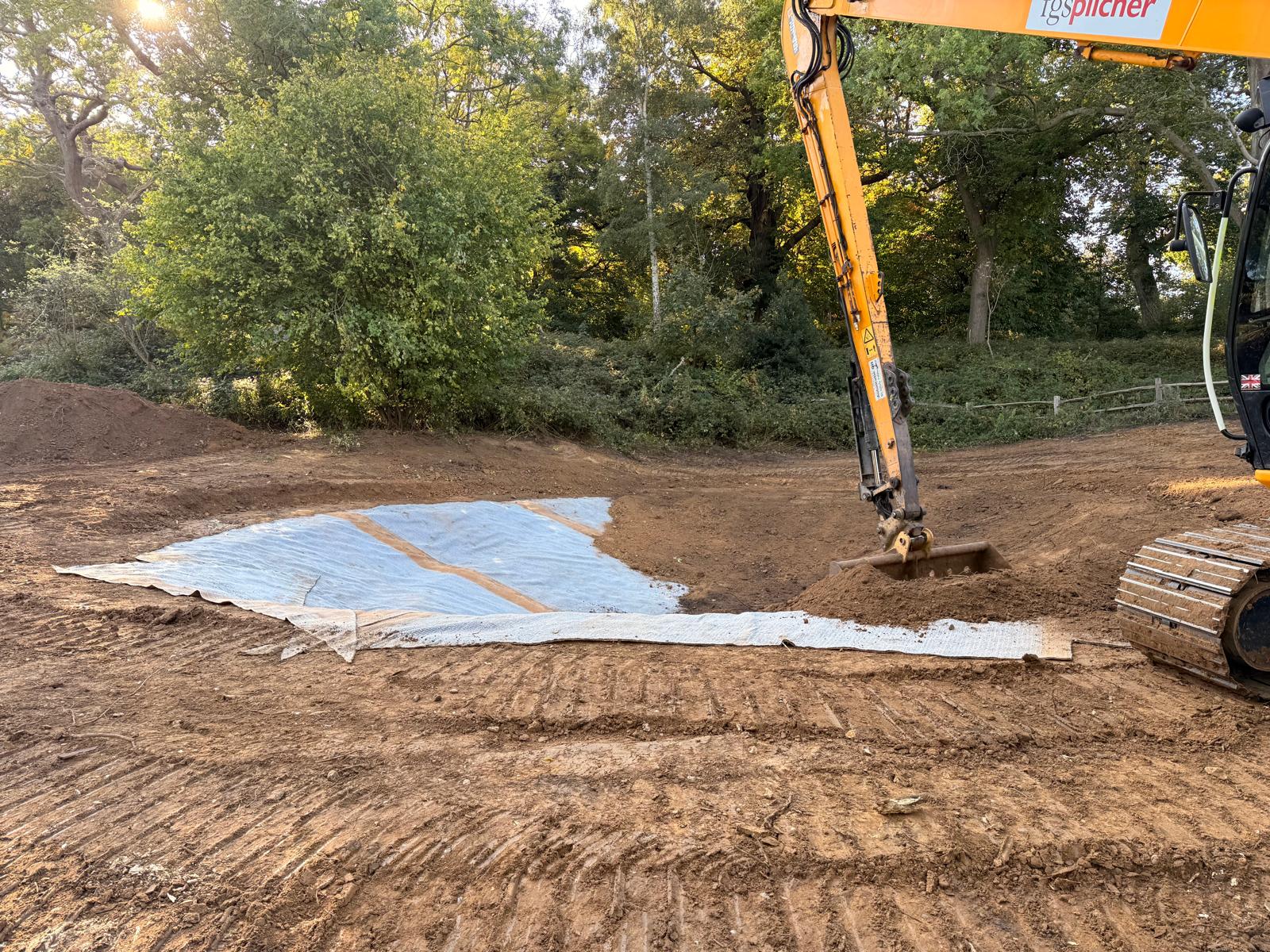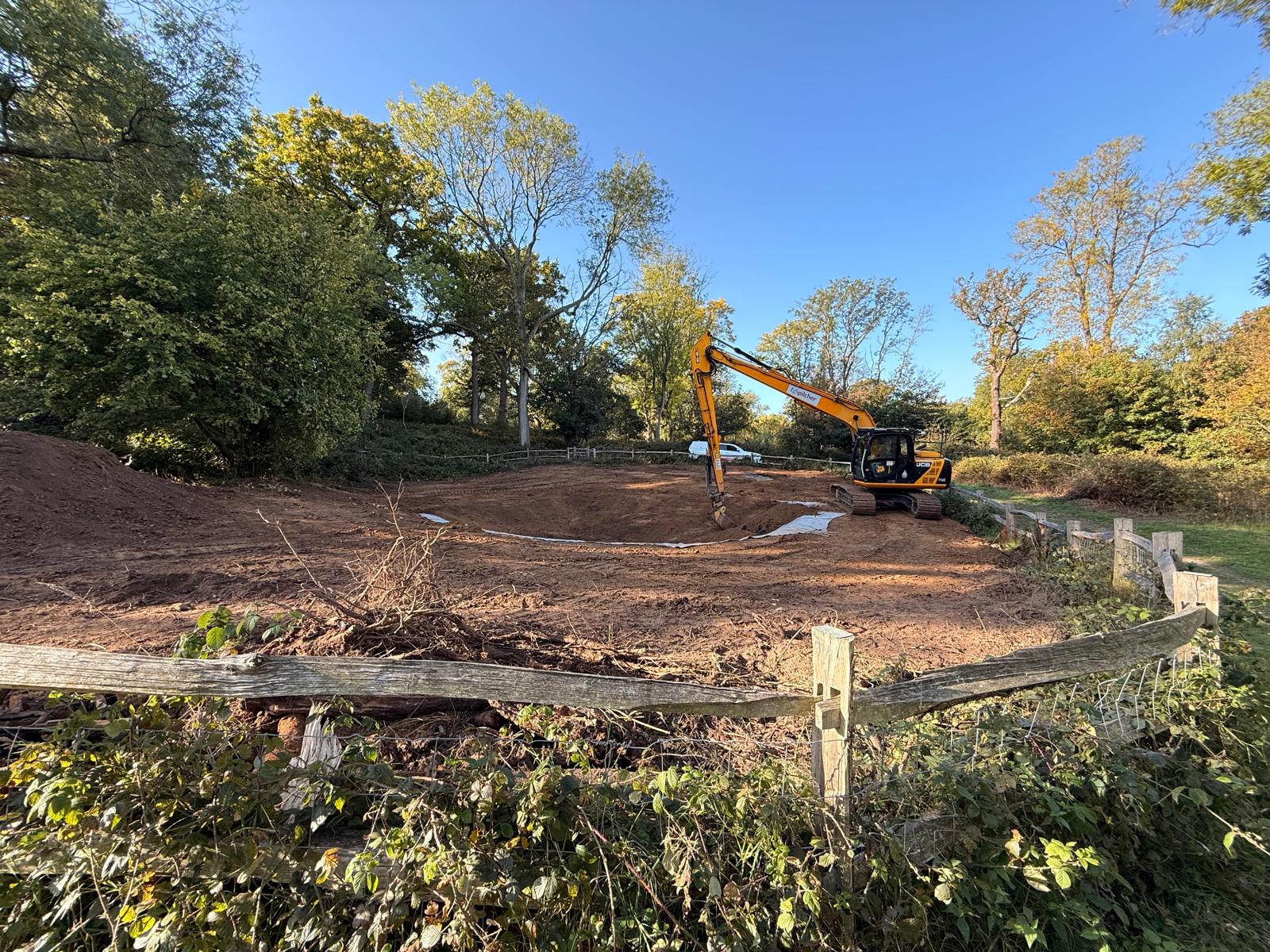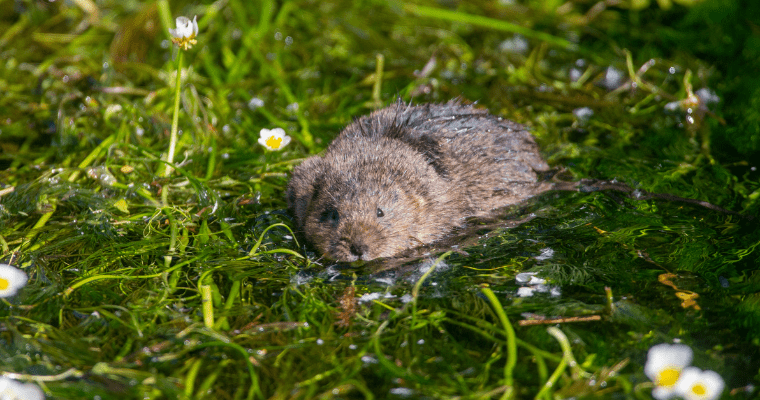Heritage Ponds Project: Digging into the past, restoring for the future
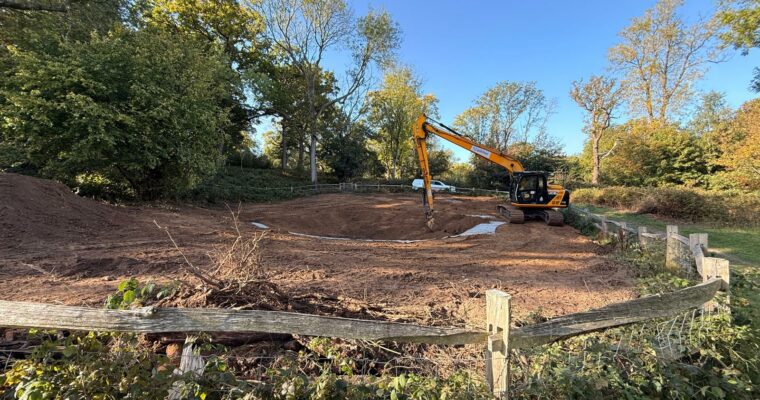
18th November 2025
Across the Kent Downs, hundreds of small ponds sit tucked into fields, woodland edges, and quiet corners of farmsteads. Many of them—dew ponds, sole ponds, and farm ponds—have been part of the landscape for centuries, dug by hand to water livestock long before modern farming took over. Today, many are now lost from the landscape as ghost ponds, holding the memory in their mud and silt.
Back in 2024, we launched our FiPL-funded Heritage Ponds Project to better understand, protect, and revive these historic features. With around 1,600 pre-1900 ponds identified across the Kent Downs National Landscape, our first job was to map them and choose a smaller number to study and restore.
From there, the journey really began.
Uncovering the stories hidden in the silt
This summer, our heritage teams got their hands dirty in the best possible way.
Working with specialists from Archaeology South-East, Wessex Archaeology, and the Canterbury Archaeological Trust, we selected 25 ponds for detailed investigation. Each one has its own history, shaped by the people who relied on it and the environment around it.
Throughout August, archaeologists visited the sites to take core samples. Where possible, thin, vertical columns of silt were extracted carefully by hand from the bottom of the pond. These are now being analysed for pollen, insect remains, and other tiny clues that reveal what the landscape looked like when the ponds were first dug.
In some cases, the layers go back centuries.
Radiocarbon (C14) dating will help confirm the age of the materials. Giving us the clearest picture yet of how these ponds evolved, were used, and how the surrounding environment has changed over time.
One of the most promising visits was to Great Dowles Farm in Elmsted, where the Canterbury Archaeological Trust uncovered beautiful peat layers. Evidence of long-term waterlogging and a rich environmental history waiting to be explored.
This work might look quiet from the outside, but each core sample is a window into the past, offering insight that will shape how we conserve these precious features for the future.
Bringing a historic pond back to life
While the archaeologists were looking into the past, another part of the project focused on the future.
In October, we restored of one of our shortlisted ponds at Cobham Wood, a National Trust site in its historic SSSI parkland. This pond first appeared on the 1st edition OS map of 1871. Archaeologists believe it may have begun life as a small Victorian quarry.
Before restoration, it was struggling. Bramble smothered the surrounding area, and the pond held a shallow pool of winter water due to the free-draining geology beneath it—far from ideal for wildlife.
Working with specialist pond contractors, the team:
- Reshaped the pond to create better habitat for amphibians and invertebrates
- Installed a bentonite clay liner to help it hold water year-round
- Cleared overgrown vegetation to open the space back up to sunlight and life
The work wrapped up mid-October, and the transformation is already remarkable. What was a dry, bramble-choked hollow has become a true wetland once again. A place where wildlife can return, and visitors can see a little piece of natural and cultural heritage revived.
We can’t wait to watch this pond fill, settle, and burst into life come spring.
A landscape shaped by people, restored for nature
The Heritage Ponds Project is helping us reconnect with the history under our feet. Helping us understand how past generations used and shaped these ponds, and how we can help them thrive again.
From scientific sampling to hands-on restoration, this work shows what’s possible when archaeologists, landowners, contractors, and conservation partners come together with a shared purpose.
And importantly, it brings us one step closer to safeguarding the Kent Downs’ remarkable natural and cultural heritage for generations to come.
This project is funded through the Farming in Protected Landscapes (FiPL) programme and delivered by the Kent Downs National Landscape on behalf of Defra, and the Folkestone and Hythe Green Grants scheme.
You might also be interested in...
Popular articles
The Best Viewpoints in the Kent Downs
Searching for incredible views? Look no further! We've rounded up the best…
Top 5 bluebell walks in the Kent Downs
If you're looking for inspiration on the best places for some bluebell…
Lambing season in the Kent Downs
Discover the importance of lambing season in the Kent Downs and find…


